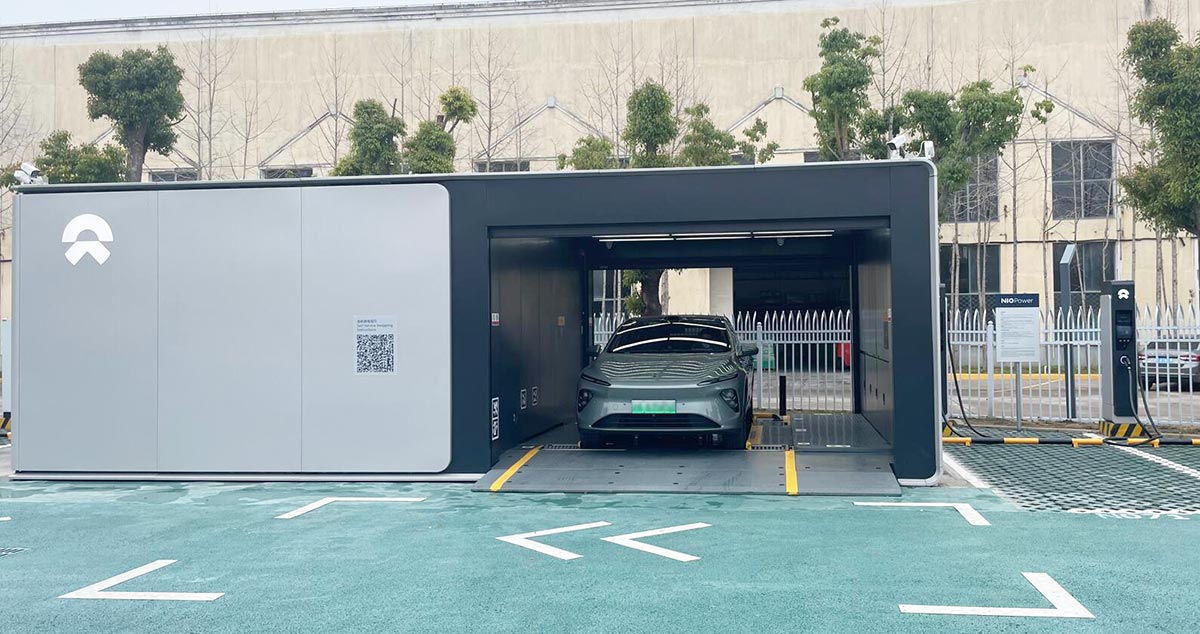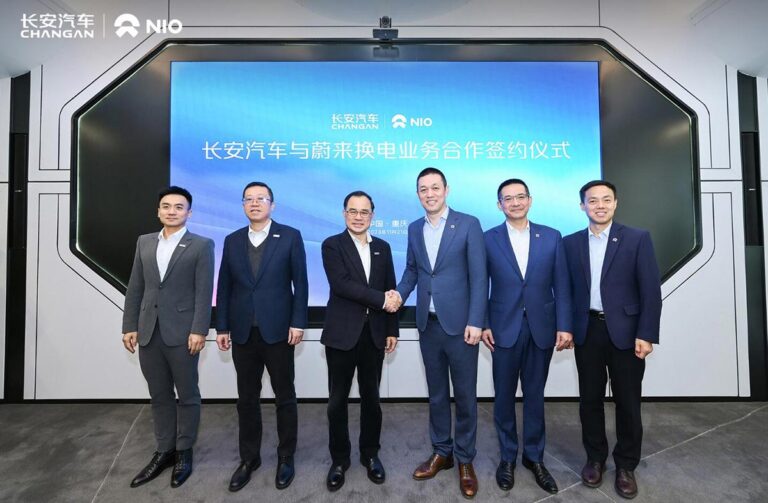As NEV ownership rises rapidly, battery swap may be the way to go when the load of residential charging struggles to meet demand, said an opinion piece in Economic Daily.
(Image credit: CnEVPost)
As one of China's most influential state-run newspapers, Economic Daily's opinion pieces are noteworthy. In its latest piece, the paper's commentator voiced support for the battery swap model led by Nio (NYSE: NIO).
Nio's new partnership with Chongqing Changan Automobile marks the first time the system has been opened up to car makers since it got involved in battery swap, and it's also a response to voices downplayed the battery swap model, according to Economic Daily commentator Yang Zhongyang, who wrote about in a November 24 piece.
As a backdrop, Nio announced on November 21 that it signed a cooperation agreement with Changan to promote the construction and sharing of battery swap network and to jointly conduct research and development of battery swap-enabled models.
For EVs, there are two main modes of energy replenishment: charging and battery swap, each with their own pros and cons. However, with the accelerated rollout of production vehicles and superchargers based on the 800 V high-voltage fast-charging platform, there has been a recent resurgence of voices that are down on the battery swap model, the Economics Daily article noted.
While Nio has repeatedly explained that its models are "chargeable, swappable and upgradable," it has been labeled by many as battery swap-only because of the sector's asset-heavy investment requirements and the small number of players, according to the article.
Nio has been questioned many times for not having a future, and its many efforts feel like a thankless endeavor, the article said.
The article listed some of the mainstream bearish views:
The current battery swap model is expensive and operationally inefficient, making it hard to turn a profit.
Battery swap stations are expensive to build and operate compared to charging. The construction cost of a battery swap station can be more than RMB 1 million, and the cost goes up when personnel expenses, operation and maintenance, and energy consumption are factored into the equation.
The cost of an ordinary fast-charging station ranges from tens of thousands of RMB to hundreds of thousands of RMB, depending on the charging power.
Slow charging piles are even cheaper, and can usually be built for less than RMB 10,000 yuan. The big cost difference is the most direct reason why the installation of charging piles is much faster than battery swap stations.
The business concept and timing of the layout are also crucial. Some believe that the battery swap market is similar to the charging market of 10 years ago, which is still in the early stage of development, with high construction costs, fewer supported models, and unrealistic profitability in the foreseeable time.
Even if the current pure electric vehicle ownership has increased dramatically, most charging operators are losing money, which discourages many companies (for building charging piles).
Any business model can only be sustainable if it is profitable. The problem is that, like building cars, the operation of a charging system is not impossible to make a profit, but requires economies of scale, according to the article.
Without the number of battery swap stations reaching a certain scale, it will be difficult for consumers to have a good experience. On the other hand, if these stations are used infrequently, the high investment and operating costs are difficult to dilute, which in turn lengthens the model's profitability cycle, according to the article.
The key to solving the dilemma lies in whether companies can join forces to accelerate the standardization of power battery specifications and battery swap services to form a scale effect as soon as possible, according to the article.
Standardization represents efficiency, the article said, adding that although China's power battery industry has a global leading edge, the battery sizes and structures of various companies are different due to the different battery capacities of models and each vehicle.
Without standardization, if battery swap stations reserve batteries for dozens of car companies and hundreds of vehicle models, operating costs will increase dramatically, the article said.
In fact, battery swap stations can provide power battery modules of different capacities for different ranges and power needs while keeping the design of the vehicle's power battery installation unchanged, the article noted.
This modular design allows for large-scale automated production on battery cells and modules, significantly reducing production costs, the article said.
The downbeat voices on the battery swap model are more from the perspective of comparing operating costs. In terms of utilization, the advantages of the battery swap model are somewhat underestimated, according to the article.
"For example, battery swap is shorter than charging and also reduces the cost of purchasing a vehicle. It has a smaller unit floor space and greater service capacity. Batteries can be flexibly upgraded, and packs of different capacities can be switched at any time, avoiding heavy investment in batteries," the article said.
"With the rapid rise in ownership of new energy vehicles (NEVs), battery swap may be the inevitable path when the load of charging piles in existing residential areas struggles to meet demand. Therefore, it is not wise to blindly downplay the battery swap model," the article concluded.


